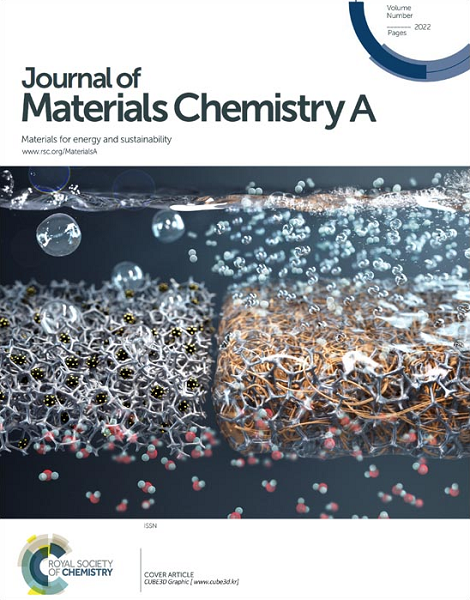Promoted surface reconstruction of amorphous nickel boride electrocatalysts by boron dissolution for boosting oxygen evolution reaction
IF 10.7
2区 材料科学
Q1 CHEMISTRY, PHYSICAL
引用次数: 0
Abstract
Transition metal borides (TMBs) are promising OER electrocatalysts in alkaline solution. Surface reconstruction and boron dissolution have been widely observed for TMBs during OER, however, the role of boron dissolution on the surface reconstruction and the OER performance remains unclear. Herein, amorphous nickel boride (NiB) was synthesized and its OER performances in 1 M KOH solution were investigated with a particular interest on revealing the critical role of boron dissolution during OER. A remarkable drop of the OER overpotential at 10 mA·cm-2 (η10), i.e., ~ 40 mV, during chronopotentiometry in 4-6 h was observed. By a combination of electrochemical tests, in-situ Raman spectroscopy and DFT calculations, we revealed that boron dissolution facilitated the exposure of more nickel active sites, reduced the oxidation potential of Ni2+/Ni3+, and promoted the surface reconstruction into γ-NiOOH. The dissolved boron, in the form of BO2-, adsorbed on the reconstructed γ-NiOOH to reduce the reaction energy barrier of the potential-determining step, and thus enhanced the OER activity. Beneficial from boron dissolution and surface reconstruction, NiB on nickel foam substrates demonstrates a superior activity (η10 = 279 mV) after 10-hour chronopotentiometry, which is comparable to most of the reported multiple-cation TMBs catalysts.求助全文
约1分钟内获得全文
求助全文
来源期刊

Journal of Materials Chemistry A
CHEMISTRY, PHYSICAL-ENERGY & FUELS
CiteScore
19.50
自引率
5.00%
发文量
1892
审稿时长
1.5 months
期刊介绍:
The Journal of Materials Chemistry A, B & C covers a wide range of high-quality studies in the field of materials chemistry, with each section focusing on specific applications of the materials studied. Journal of Materials Chemistry A emphasizes applications in energy and sustainability, including topics such as artificial photosynthesis, batteries, and fuel cells. Journal of Materials Chemistry B focuses on applications in biology and medicine, while Journal of Materials Chemistry C covers applications in optical, magnetic, and electronic devices. Example topic areas within the scope of Journal of Materials Chemistry A include catalysis, green/sustainable materials, sensors, and water treatment, among others.
 求助内容:
求助内容: 应助结果提醒方式:
应助结果提醒方式:


